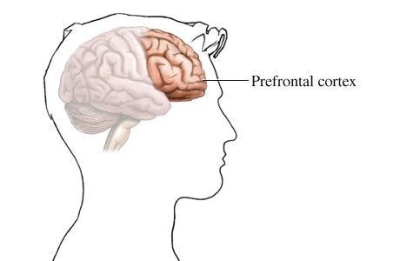
Many parents do not understand why their teenagers
occasionally behave in an impulsive, irrational, or dangerous way. At times, it
seems like they do not think things through or fully consider the consequences
of their actions. However, what these imaging studies show is that the brain
may be behind much of this behavior. To
understand why adolescents act a certain way, it is important to understand
what is happening in their brain.
As puberty begins, the prefrontal cortex (PFC) also
begins to develop at an amazing rate, paralleling brain growth in the first
three years of life. Their brains are wired in a way that floods them with
emotional responses to external events. Adults think with the prefrontal
cortex, the brain's rational part, but teens process information with the
amygdala, the emotional part. The amygdala is part of the limbic system of the
brain, which is fully functioning and utilized by age 13-14 years. The PFC
fully develops between the ages of 18-25.
The prefrontal
cortex is located in the very front of the brain, just behind the forehead. In
charge of abstract thinking and thought analysis, it is also responsible for
regulating behavior. This includes making choices between right and wrong, and
predicting the probable outcomes of actions or events. This brain area also
governs social control, such as suppressing emotional or sexual urges. Additionally,
the PFC helps to focus thoughts, which enables people to pay attention, learn,
and concentrate on goals.
People with damaged to the PFC have trouble on the
delay-response task, in which they see or hear something, and then have to
respond it after a delay. Unfortunately, the PFC is one of the brain regions
most susceptible to injury. When the pathways between the pathways prefrontal cortex and
the rest of the brain are damaged or altered, serious personality changes can
result. For example, a person who had been formally outgoing can become quiet
and withdraw after the injury. A damaged
PFC can negatively affect a person's ability to assess situations or perform
tasks. Since social judgments are made in this brain area, people with damage
to the PFC are unable to discern appropriate behavior and/or suffer from
emotional distress, such as irrational fears, anxiety, euphoria, and
irritability.
The video below explains how our thoughts and
actions are able to change while we grow up. It explains how the prefrontal
cortex in adolescence and adults are very different such as making decisions and it's contributions with our actions. In it, you will see an assistant professor
explaining a procedure to determine the changes in development in adolescence
and adults.
It is very interesting to learn much in detail about the prefrontal cortex, how it impacts our lives trhough the early years. I found it essential to know how teenagers process information at a different time and also how the amygdala is the emotional part in which much choices are processed. The prefrontal cortex is the one responsible for making choices such as the good and bad, now wonder teenagers and younger children have those unpredictable behaviors. It is much clear to understand the way their brain is processing and help them overcome that stage, until well matured. What also caught my attention was that the prefrontal cortex fully develops at the ages 18-25, know I understand how much of us at still unmature until later years. The video was very catchy, I hope they do come out with solutions for helping on crimal cases, due to the fact that brains function at a different rate due to the age experience .
ReplyDeleteThis comment has been removed by the author.
ReplyDeleteI recently heard of how our brains fully develop until the age of 25 and how that should really be the official determinant of adulthood. It is definitely interesting to know that it is due to the PFC that we remain young physically and mentally so long. The PFC carries within what characterizes us as “adults”. Being interested in developmental psychology makes the differences between the child brain activity and the adult brain activity very interesting. Adolescents are stereotypically known to be impulsive and very emotion driven. Adults are the more logical and future oriented. The video helped differentiate the precise reasons as to why those characteristics are related to people of a certain age group. It is also important to teach children and young adults to think closely and truly think of the consequences in important situations. The PFC and the law are actually closely related and that was also something interesting to think of. We hear of children committing crimes and not being punished in any way, yet we also see those punished and we see people who disagree with such punishment. It’s a controversial subject and it is important to know the facts to make accurate decisions.
ReplyDeleteSo many adult parents live with the troubles of not understanding their rebellious new coming teens. Even though they have all experienced the years, it's different for us all. Your article allows us to look at it in a scientific manner by realizing how the prefrontal cortex develops at an incredibly fast speed as puberty begins in a young human. So if our prefrontal cortex is developing at such a high speed at this age, then why do we not process information through this area like adults do? Instead, as "young kids," our brains act more with emotional responses to the life around us because we use the amygdala to think and rationalize things.
ReplyDelete